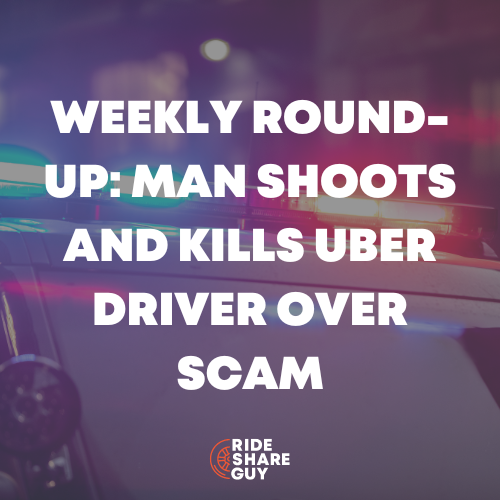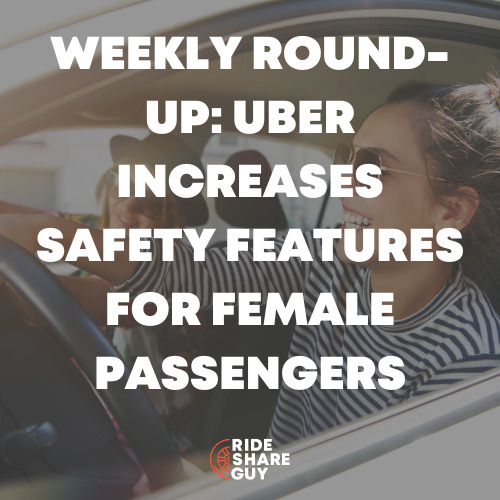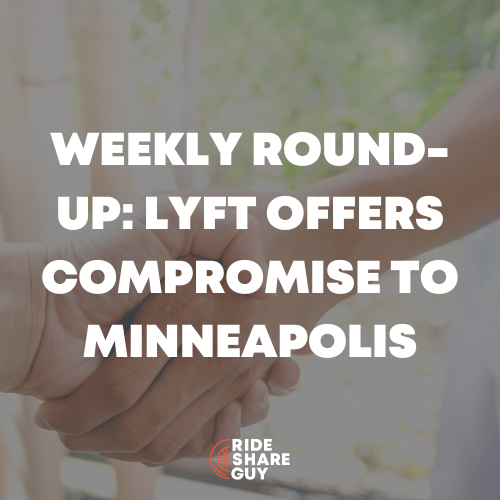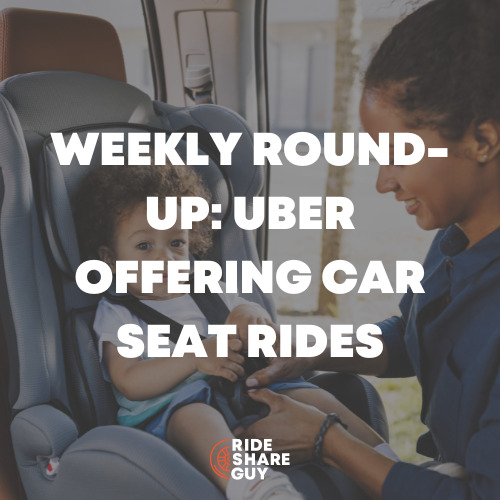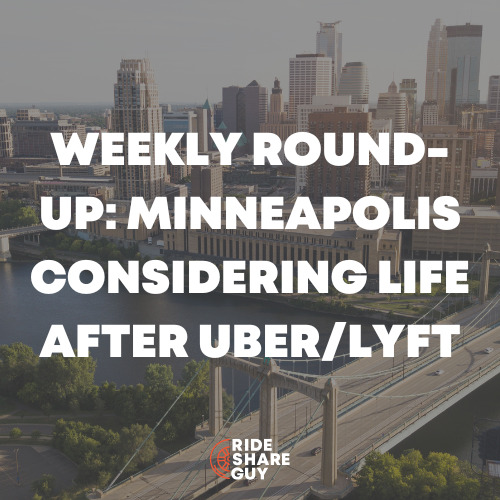Harry here. It looks like Lyft and Uber are in the midst of another round of fundraising and today, RSG contributor John Ince takes a look at the numbers behind Lyft’s operations. As expected, these companies are spending a lot of money and it could be a while before they ever turn a profit.

Lyft financials show struggles of being No. 2 behind Uber
Sum and Substance: Ride-hailing startup Lyft is heading back to the fundraising till, but its numbers may not look that rosy to investors. The company lost $127 million in the first half of 2015 on $46.7 million in revenue, according to documents obtained by Bloomberg. Lyft is seeking to raise the new capital at the same time that rival Uber is in conversations with investors about another round of private fundraising.
The $500 million round sought by Lyft would put its valuation at approximately $4 billion, according to people briefed on the matter who spoke on the condition of anonymity. That is up from the company’s current valuation of about $2.5 billion. The figures are still in flux and may change as fundraising talks continue, the people said.
Lyft is burning through tens of millions of dollars a month, according to a fundraising presentation compiled by Credit Suisse. It highlights tepid financial performance at Lyft and reveals that the company has repeatedly underperformed its own expectations. In the first half of the year, Lyft generated less revenue, lost more money, and added fewer customers than projected in February. The numbers suggest that Lyft has had to burn through cash as it chases growth in a competitive industry. The willingness to spend big on growth is a costly strategy that’s becoming more common among tech companies. Public market investors have expressed concern about the high valuations of private technology companies recently. Fidelity Investments, BlackRock, and others reduced their stakes in some startups this year. In the first half of 2015, Lyft spent $96.1 million on marketing. That’s more than twice its net revenue during the period. In one document obtained by Bloomberg, Lyft promotes its ability to attract new drivers and riders, even as it does so at a sizable loss. Customer discounts represent a big portion of Lyft’s marketing costs. This year, Lyft has also purchased billboards in New York’s Times Square and on Market Street in San Francisco, in addition to paying bonuses to drivers.
My Take: These figures are very revealing. They show that Lyft is losing almost 2 dollars for every dollar of revenue they take in. This can’t continue. For all the noise that both Uber and Lyft have made on the tech scene, neither has yet to demonstrate that they have a viable business model. Uber lost $470 million last year on revenues of $415 million. Looks to me like investors are simply subsidizing passenger fares and driver bonuses to ramp up growth rates. I suppose as long as private investors are satisfied with growth figures and don’t demand profits this game can continue. But recent trends in public markets suggest that public market investors won’t tolerate that. Just look at the price of Square’s IPO. They had to discount the value of shares over 50% from what private investors paid. In the process the value of the company was cut in half almost overnight. The private valuation tech bubble is bursting before our very eyes and this surely will affect the environment in which Uber and Lyft operate.
WATCH: Denver Lyft driver pepper sprays passenger who refused to get out of his car
Sum and Substance: A Denver Lyft driver has been suspended after a video shows him pepper spraying a passenger on Halloween night. It started just like any other ride would — a couple of people needing a lift back home after a Halloween party request for a driver to pick them up — but as soon as the riders get in the back seat, an argument ensues. “Whoa, whoa, whoa! No,” the driver says in the video. “Everybody out. This ride can’t happen.” “It’s empty,” a female passenger says as she’s holding a beer can. She then offers to throw the beer can away, but the driver refuses. “This ride can’t happen at all now,” the driver says. A man dressed as a cowboy is then seen getting into the vehicle and the situation escalates. When the male passenger refuses to leave, the driver raises his voice and tells him to get “out of the f—–g car, dude!” The passenger then verbally assaults the driver and threatens to punch him. Meanwhile, the woman accompanying the man inside the car tries to reason with him to leave the vehicle, but her words are cut off in the argument between passenger and driver. After a few seconds of the heated discussion, the Lyft driver is then seen spraying the man in the face with mace. But was it self-defense or something else? That’s what Lyft officials are trying to figure out.
My Take: Another pretty compelling video that captures a confrontation between driver and passenger. This one involves the issue of an open beer can. We’ve all been there. When pax offered to throw it away, that could have been the end of the incident had the driver been willing to go along with that. My suspicion is that he refused because he figured he’d get rated low from the passenger and by canceling there would be no rating involved. What he got was much worse – a lot of adverse publicity and a suspension. Two takeaways here – one, that dash cam is looking all the more important as an investment. Two, is this kind of hassle really worth it? With half of all drivers going inactive within a year, apparently many are just saying, “No.”
Uber’s ‘destinations’ feature could turn basically everyone into an Uber driver
Sum and Substance: Starting soon, Uber drivers looking to earn some extra money on their commutes to and from home — especially those who drive part-time — will be able to with the ride-hailing app’s new “destinations” feature. Drivers heading in a specific direction can input their destination into the app, and Uber’s algorithm will send them ride requests that appear along the way. Requests that would force them to deviate from their route would be filtered out. The feature is billed as a way to heighten driver flexibility, but it could have much more far-reaching consequences. Uber loves to talk about how many of its drivers are only part time; 61 percent of drivers in the US have full- or part-time jobs outside Uber, the company says. If you never have to deviate from your route, suddenly anyone has the potential to be an Uber driver, regardless of employment status.
My Take: Now this is significant. This is one of the main raps against the app – you never know where you’re going to end up until you start the ride and then it’s too late to cancel. I had a lengthy conversation with a passenger just yesterday about this. He was thinking about signing up as a driver until he learned that you couldn’t control where you had to go. But with this feature, all that would change. But it raises another issue for Uber – how will they stop drivers from canceling rides that don’t go where they want to go? Maybe that’s why that cancellation rate guillotine blade is always hovering over a driver’s head.
Driver says Uber targeted his profile after he critiqued high-level executive
Sum and Substance: An Uber driver who critiqued the company’s top-brass at a highly publicized event now tells the San Francisco Examiner he’s facing backlash from the tech company. Last Friday Eric Barajas, a Bay Area-based Uber driver who works in San Francisco, leveled criticism to Uber, which garnered exposure in national news. The next day, he said, he was unable to get fares via the Uber app. Barajas showed the Examiner video of two phones with two Uber driver accounts side by side, one showing “pings” for ride requests, while Barajas’ phone had no pings. Now he says he isn’t sure what to do – his three children and wife depend on his earnings to live, and without his income from Uber he may face dire financial straits.
The Examiner contacted Uber, and only an hour after a phone conversation with an Uber spokeswoman, Barjas saw his account suddenly reactivated. He also reported “strange” modifications to his profile and Uber login screen, what he said are clear signs Uber was trying to shore up the story they told this reporter. “You call them, and then its active,” Barajas told the Examiner. “That says to me they’re trying to cover their tracks.” He still worries that his account may be deactivated or otherwise modified in the future, once media exposure dies down. That exposure began last Friday, when former Obama campaign manager-turned-Uber advisor David Plouffe was onstage at the Next Economy Conference in San Francisco. As cameras rolled, Plouffe invited drivers to speak at a microphone. Barajas made his voice heard. “I just wanted to know how you guys are helping the economy when there are full time drivers like me… who are struggling to make ends meet, barely making minimum wage,” he said. On Craigslist, Uber in the past has said drivers could make $35 an hour, Barajas said, but that isn’t near what he earns. “After all the expenses I’m really struggling, I don’t know if I can pay my PG&E bill and my water bill,” he said. Plouffe replied, “We’d like to sit down with you and talk about how we can improve your situation.”
My Take: Looks like Uber got caught in the act in this one. There have long been rumors and reports of Uber using tactics like this to intimidate or retaliate against drivers who speak out publicly against the company, but the details of those incidents seemed murky. Here it’s clear cut, and Uber does not look good.
What do you guys think about the week’s top stories?
-John @ RSG
